(Page créée avec « For this step there are two methods: cold saponification and hot saponification. The method of the video tutorial is cold, that of the photos on the opposite hot. Both met... ») |
(Page créée avec « ==== Cold saponification ==== * Pour the oil and the soda solution into the blender. * Mix until you get the trace, that is, when the mixture thickens and the mixer blade... ») |
||
| Ligne 88 : | Ligne 88 : | ||
|Step_Content=For this step there are two methods: cold saponification and hot saponification. The method of the video tutorial is cold, that of the photos on the opposite hot. Both methods are detailed here. | |Step_Content=For this step there are two methods: cold saponification and hot saponification. The method of the video tutorial is cold, that of the photos on the opposite hot. Both methods are detailed here. | ||
| − | ==== | + | ==== Cold saponification ==== |
| − | * | + | * Pour the oil and the soda solution into the blender. |
| − | * | + | * Mix until you get the trace, that is, when the mixture thickens and the mixer blade leaves a mark after the mix stops. |
| − | * | + | * Place the mixture in a mold. A coconut shell lined with a clean cloth does the trick. Let stand at least 24h. The saponification reaction continues for several days after molding. |
| − | * | + | * Unwash the soap, cut it to the desired size and store it dry for at least 4 weeks. |
| − | * | + | * Test the pH of the soap. To do this, take a small piece of soap and dissolve it in lukewarm fresh water. Dip a small piece of pH paper into the solution. The pH of the soap should be as low as possible. A pH below 10 is acceptable but it will be best to test the soap on a small area of skin to ensure that it is supported. If the pH is above 10, let the soap dry 2 more weeks and repeat the pH measurement. If the soap is still too basic (pH> 10) it is possible to use it to wash the laundry but to avoid for the skin. |
==== Saponification à chaud ==== | ==== Saponification à chaud ==== | ||
Version du 17 janvier 2018 à 17:34
Description
In areas where the coconut palm grows, Cocos nucifera , it is possible to produce a soap from ingredients from this tree.
Sommaire
Introduction
Soap is the basis of hygiene. Washing your hands regularly and even more so the body limits the transport of harmful substances and bacteria. To meet this need, it is possible to make soap yourself with simple products. The chemical reaction to produce the soap is called saponification and requires two reagents: a fat and a strong base. Here the fat will be coconut oil, from the ripe brown walnut, and the strong base will be soda.
This tutorial will teach you how to make soap from coconut.
Matériaux
- Coconut
- Rainwater
- Soda ash
- PH paper
Outils
- A pot
- A pan
- A glass jar
- Some clean towels
- A kitchen scale
- A stove
- A mixer
Étape 1 - Produce coconut oil
The first step is to extract the coconut oil from ripe coconut (brown nuts). Here is the procedure:
- Open the coconut
- Scrape the pulp with a scraper if you do not have a mixer-blender. If you own a blender you can detach the pulp from the shell roughly and mix everything.
- Put the resulting coconut crumbs in a container, cover with hot water and mix well. If you use a blender you can directly cover with hot water and mix.
- Place a clean towel over a second container and filter the resulting coconut milk. press the cloth tightly to obtain as much filtrate as possible.
- Place the coconut milk obtained in a plastic bottle and allow to settle until two distinct phases are obtained. We find the coconut cream above and the water below. Drill a small hole in the bottom of the bottle to let the water escape and plug the hole to keep the cream.
- Pour the cream into a pan and cook over medium heat, stirring. Burnished cream and translucent oil is extracted. This step can take several tens of minutes.
- Filter the extracted coconut oil.
Étape 2 - Dosing the products
Once the extracted coconut oil can be measured the mass obtained.
This mass of oil will determine the amount of soda to be added to the oil and thus allow the saponification, that is to say the transformation into soap.
The soda used will be diluted in a given volume of water.
For this simplest step is to use an online calculator. It suffices to specify the nature of the oil used and its mass in order to obtain the quantity of soda and water to use.
Online saponification calculator
Note: In order to obtain the mildest possible soap for the skin, it is necessary to produce a surgras soap. The calculator directly proposes the quantities of soda to obtain a surgras soap at 5%, 10%, etc.
Overgrading is actually reducing the amount of soda so that the chemical reaction is not total. The unreacted oil then enriches the soap with the fatty acid and lowers its pH.
Étape 3 - Prepare the soda solution
Safety instructions regarding the use of caustic soda:
Caustic soda is a product that can cause burns. It is therefore advisable to wear a minimum safety equipment.
Make sure to wear long clothing, gloves (nitrile or latex, laboratory) and safety glasses, well covered.
In case of projection, rinse with white vinegar, do not put under water. So always have a bottle of vinegar in range when you handle soda.
To mix two liquids, always pour the most concentrated in the least concentrated to reduce the risk in case of projection.
Once the equipment is on, you can start:
- Pour the water into a container at the quantity / mass indicated by the calculator. Water having a density of 1, you can use the scale to be precise in the measurements.
- Weigh the soda in another container to the mass indicated by the calculator. This measure must be as precise as possible. Better to add less soda than too much, to make a soap too fat rather than too basic. If you add the soda directly into the water you will not be able to remove material and correct a too big addition.
- Gently add the weighed soda to the volume of water and stir gently avoiding any projection. The solution heats up, it's normal.
Étape 4 - Start manufacturing: saponification and molding
For this step there are two methods: cold saponification and hot saponification. The method of the video tutorial is cold, that of the photos on the opposite hot. Both methods are detailed here.
Cold saponification
- Pour the oil and the soda solution into the blender.
- Mix until you get the trace, that is, when the mixture thickens and the mixer blade leaves a mark after the mix stops.
- Place the mixture in a mold. A coconut shell lined with a clean cloth does the trick. Let stand at least 24h. The saponification reaction continues for several days after molding.
- Unwash the soap, cut it to the desired size and store it dry for at least 4 weeks.
- Test the pH of the soap. To do this, take a small piece of soap and dissolve it in lukewarm fresh water. Dip a small piece of pH paper into the solution. The pH of the soap should be as low as possible. A pH below 10 is acceptable but it will be best to test the soap on a small area of skin to ensure that it is supported. If the pH is above 10, let the soap dry 2 more weeks and repeat the pH measurement. If the soap is still too basic (pH> 10) it is possible to use it to wash the laundry but to avoid for the skin.
Saponification à chaud
- Verser l'huile puis la solution de soude dans un bocal en verre.
- Placer le bocal au bain-marie à feu moyen et remuer de temps en temps.
Cette étape peut prendre plus de deux heures. Les deux phases (huile et solution de soude) vont se mêler puis probablement déphaser après avoir donné un épais mélange. C'est normal. Continuer de chauffer et mélanger jusquà ce que les deux phases se mêlent à nouveau.
- Une fois la réaction terminée le passage de l'ustensile utilisé pour remuer (cuillère en bois par exemple) laisse une trace. Il est alors possible de mouler le savon.Une coque de noix de coco tapissée d'un chiffon propre fait bien l'affaire. Laisser refroidir et reposer au moins 24h.
- Démouler et couper le savon à la taille souhaitée.
- Contrairement à la saponification à froid, le savon obtenu ici peut être utilisé après refroidissement. Il est tout de même nécessaire de tester son pH.
- Tester le pH du savon. Pour ce faire prélever un petit morceau de savon et le dissoudre dans de l'eau douce tiède. Tremper un petit morceau de papier pH dans la solution. Le pH du savon doit être le plus bas possible. Un pH inférieur à 10 est acceptable mais il sera préférable de tester le savon sur une petite surface de peau afin de s'assurer qu'on le supporte. Si le pH est supérieur à 10 il est possible d'utiliser le savon pour laver le linge mais est à éviter pour la peau.
Notes et références
Le tutoriel d'extraction de savon est inspiré de celui de Bob-Bee sur Instructables
- Réalisé par Thomas Piboum et Karel Janik pour Nomade des Mers.
Yes
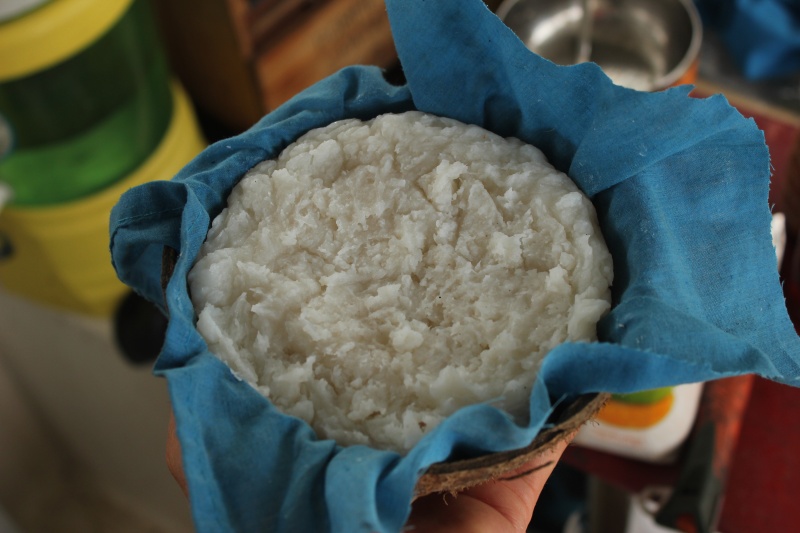
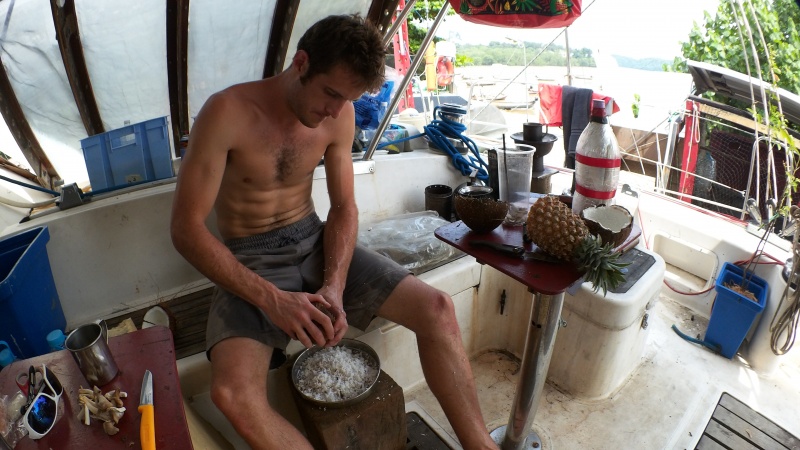
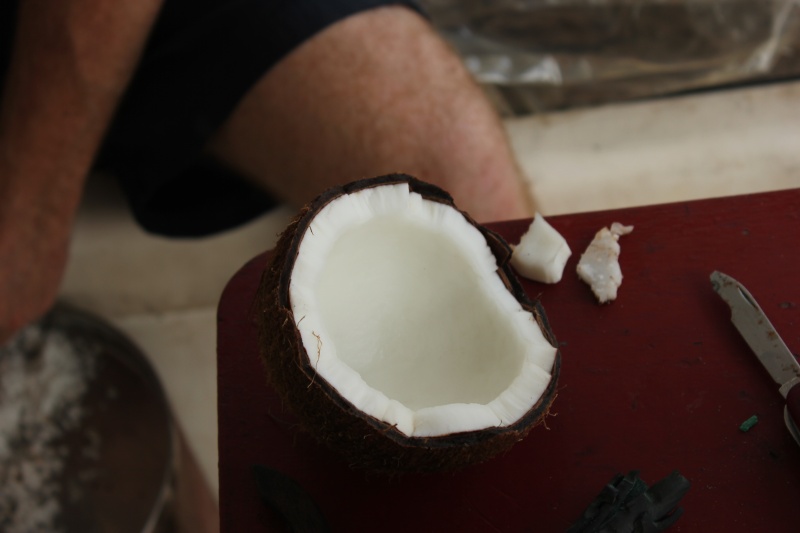
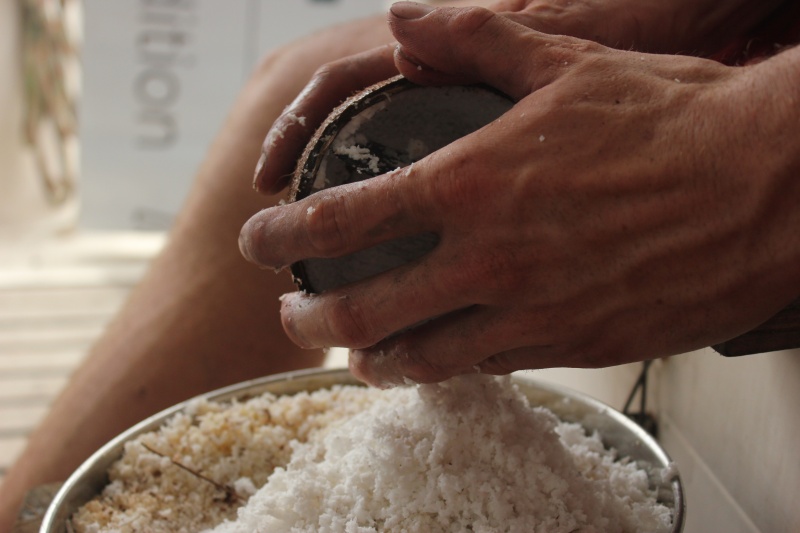
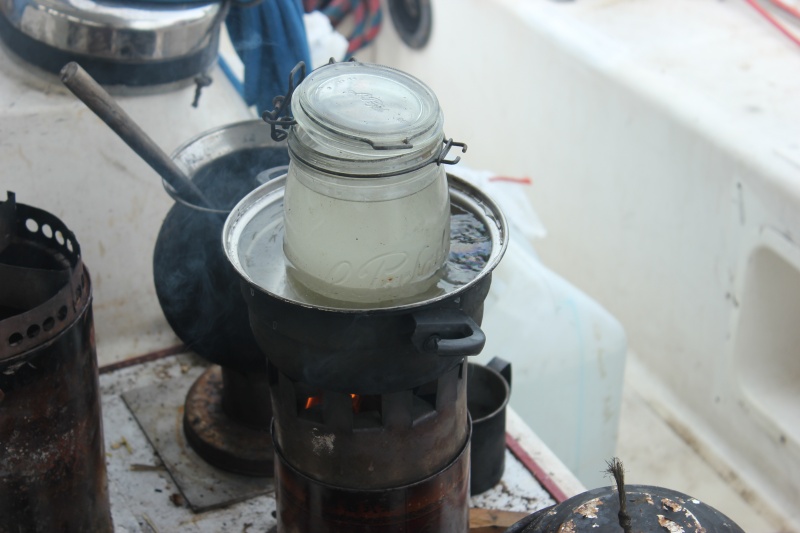
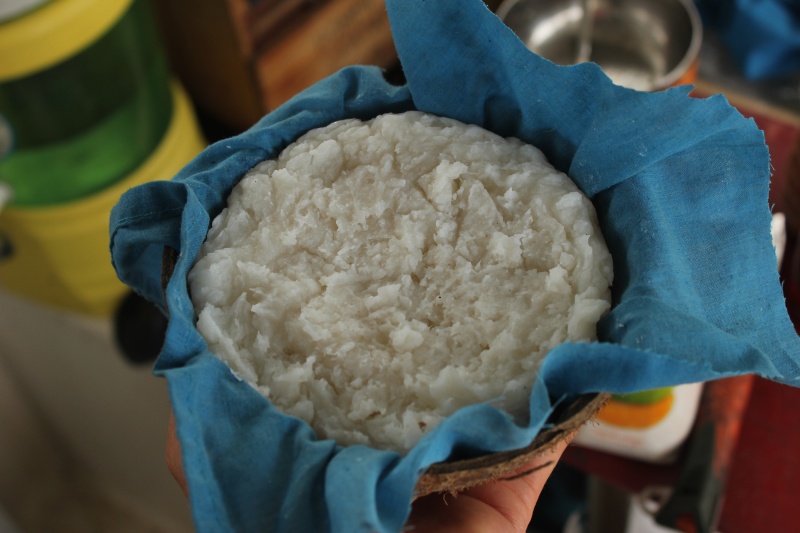
 Français
Français English
English Deutsch
Deutsch Español
Español Italiano
Italiano Português
Português